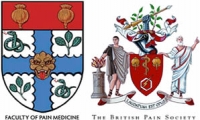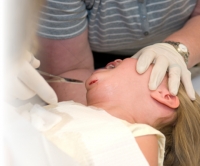Pain in Children is Different course for Medical Doctors



This session describes the incidence, causes and effects of pain in infants, children and young people and the basic physiological mechanisms operating in both acute and chronic pain.
Learning Objectives
By the end of this session you will be able to:
- List the incidence, causes and effects of acute pain in children
- List the incidence, clinical presentations and effects of chronic pain in children
- Describe basic nociceptive mechanisms and the influence of child development
- List the differences between inflammatory and neuropathic pain
- Describe the physiological basis for chronically maintained pain
Children's pain is often poorly managed, both in hospital settings and in the community, leading to unnecessary suffering and short-term and long-term complications.
Suellen held paediatric anaesthesia consultant posts in Australia, obtained a Masters in Pain Medicine and was a Foundation Diplomate of the Faculty of Pain Medicine, Australian and New Zealand College of Anaesthetists in 1999. She subsequently completed an MSc and PhD in developmental neurobiology of pain in London.
Her current research interests include developmental analgesic efficacy and safety and long-term effects of pain in early life.
Suellen has contributed to evidence-based acute pain guidelines, is an Editor of the Oxford Textbook of Paediatric Pain, and is a content author on the e-PAIN project.


Richard is involved in clinical pain management, clinical and laboratory research, and has lectured and published extensively on the subject of pain mechanisms and management.
He is the Clinical Lead of the children’s Pain Management Service at Great Ormond Street. He is a founder member of the UCL Paediatric Pain Research Centre; a collaboration between clinicians and scientists, an Examiner for the UK Fellowship of the Faculty of Pain Medicine and Chair of the Medicines for Children Research Network (MCRN) Pain & Palliative Care Clinical Studies Group.
Richard is a module editor and content author of sessions of the e-PAIN project.
- Radiology – Integrated Training Initiative (R-IT...
- Posted By eIntegrity Healthcare e-Learning
- Posted Date: 2024-11-14
- Location:Online
- This session reviews which chambers contribute to the ‘normal cardiac outline’ and examines how specific chamber enlargement or absence alters the normal cardiac shape. It will describe the different diagnoses, which result in characteristic
- Radiology – Integrated Training Initiative (R-IT...
- Posted By eIntegrity Healthcare e-Learning
- Posted Date: 2024-11-14
- Location:Online
- This session provides an overview of the clinical manifestations of haemangiomas, lymphatic and vascular malformations, their radiological work-up plus typical imaging findings.
- Radiology – Integrated Training Initiative (R-IT...
- Posted By eIntegrity Healthcare e-Learning
- Posted Date: 2024-11-14
- Location:Online
- This session covers imaging and diagnosis of paediatric mediastinal masses, and is organised based on their location in the mediastinum.
- Radiology – Integrated Training Initiative (R-IT...
- Posted By eIntegrity Healthcare e-Learning
- Posted Date: 2024-11-14
- Location:Online
- This session discusses radiographic anatomy of the normal mediastinum and its compartments containing different structures and why this is useful when interpreting an abnormal image. The silhouette sign and how it is used to localise a mass on chest radio
- Radiology – Integrated Training Initiative (R-IT...
- Posted By eIntegrity Healthcare e-Learning
- Posted Date: 2024-11-14
- Location:Online
- The session looks at pneumothorax, pneumomediastinum, air leaks in neonates, air leaks in older children and post-traumatic air leaks.







